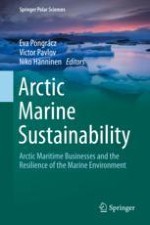2020 | OriginalPaper | Chapter
7. Miles and Meters Matter: Political Effects on the Shipping Routes of Measurement Techniques in the Arctic
Author : Eda Ayaydın
Published in: Arctic Marine Sustainability
Publisher: Springer International Publishing
Activate our intelligent search to find suitable subject content or patents.
Select sections of text to find matching patents with Artificial Intelligence. powered by
Select sections of text to find additional relevant content using AI-assisted search. powered by
